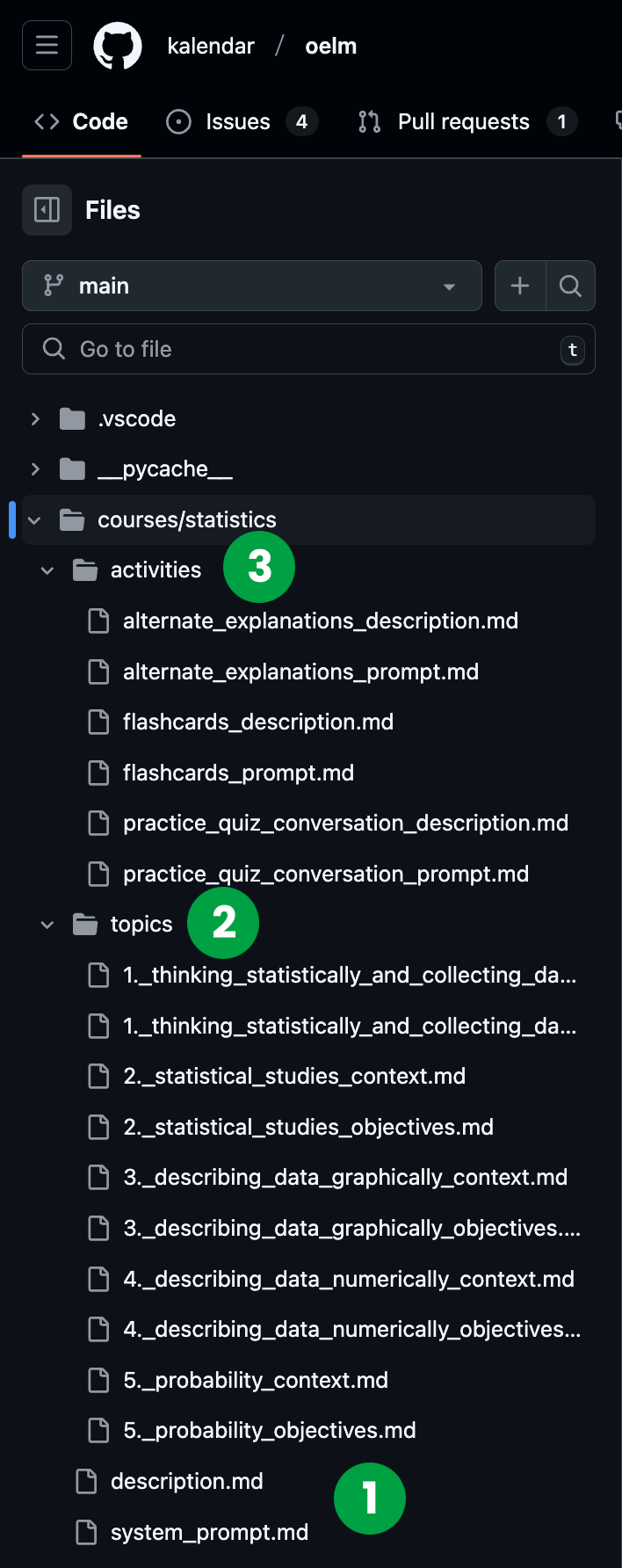The OELMs source code has been updated on GitHub to include better documentation to help you get started as well more examples of content and activities. As you may remember from last week’s post about the OELMs architecture, the design goal of Open Educational Language Models is to combine the technical power of generative AI with the participatory power of open education. To help you see how that works, the initial implementation in GitHub is sub-optimized in order to make it easier to understand how to contribute. As you see in the demo content in the screenshot from GitHub below, each “course” in an OELM is comprised of three parts (as described last week):
- a course description and system prompt stub,
- a set of OER that provide the OELM with accurate disciplinary information, to prevent hallucinations, and
- a set of activities that help students engage in evidence-based study practices

Again, this implementation is sub-optimal specifically in order to make it clear that ANYONE can contribute to an OELM. While this information will eventually be stored in a database, in this implementation the content and activities are just text files – they could be drafted in Google Docs, Word, or anywhere you like. And they’re all openly licensed (OER), meaning they can be revised and remixed to meet local needs. YOU DON’T NEED TO BE A CODER TO CONTRIBUTE TO THE OELMS WORK!
Here’s a video (no audio) of the current demo of the OELMs application in the Explore mode, where the learner chooses what they want to study, and then how they want to study it. The demo only has content for part of one course, and a handful of activities. But the goal is to eventually have a large library of courses, including a full compliment of open content and activities (some of which could be reusable across courses) developed by teams of faculty and students through facilitated workshop-like experiences.
Medium-term, we should have better multimodal support in open models soon, which will enable more kinds of activities (including voice in and out). Longer-term, each course should have its own specifically fine-tuned, small, open weights model. And that model (together with the OELM wrap around) should run locally on your device.
You must be logged in to post a comment.